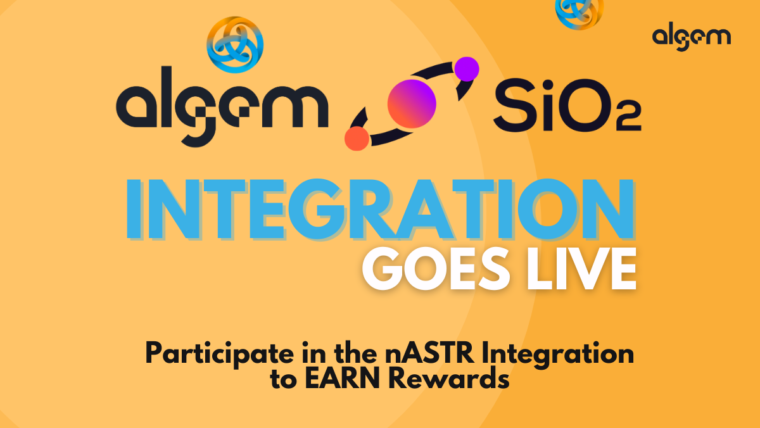Astar Network is an innovative smart contract platform that allows developers to create decentralized applications (dapps) with EVM or WASM. The Astar network can process up to one thousand transactions per second with nominal transaction fees. Its integration with Polkadot makes it compatible with other blockchains.
At the end of January, the Astar network went live after successfully crowdfunding 10,333,552 DOT from 21,720 backers. As of this writing, there are currently 459,379 token holders, and the total token value (TVL) has increased to $205,000,000 since launch.
Astar first implemented the innovative staking mechanism known as “dapp staking.” The Proof of Stake consensus mechanism has been updated for Dapp Staking.
Let’s quickly review the Proof of Stake consensus, to which dapp staking adheres, to get a firmer grasp on what dapp staking is.
The Proof of Stake Consensus
The validators of blocks of transactions in this consensus mechanism have to stake a certain amount of the network token.
This token is used to choose validators from the pool of available validators to check a block of network transactions.
As a deterrent, validators’ staked tokens are reduced if they validate invalid blocks.
Those who do not have the resources to operate a validator node on the network can nominate others. For nominators, the process involves staking tokens with a validator.
Tokens staked on a validator increase the validator’s chances of being chosen to verify a block. Select validators for a block are compensated with the block rewards for that block.
The validator and those who staked on that validator each receive a portion of the reward.
Astar’s dapp staking mechanism
Astar handles staking for decentralized applications (dapps) similar to how PoS works, but some key differences make it an exciting platform for developers.
Like validators, dapp staking verifies network transactions.
- To verify transactions, Collators are selected randomly and must stake a predetermined number of Astar tokens.
- Instead of staking with collators, nominators put their tokens into developer-created decentralized applications (dapps).
The main goal of this new idea is to give developers a steady way to make money from the tokens their dapp users stake.

When you stake Astar tokens, it takes 10 ERA, or about 10 days, to unbond them. This is the time it takes for your locked tokens to be unlocked. Since the time required to produce a block varies, this is only an estimate.
Staking in decentralized applications (dapps) is a powerful incentive for creating high-quality apps that users love to use.
Developers’ take-home pay is proportional to the TVL of their dapps. So, programmers make useful dapps to keep users and give them the best experience possible.
Astar’s design is an excellent solution to the problem that there aren’t enough incentives for web3 programmers. Along with its scalability and interoperability, this is what makes Astar so attractive to software developers.
The incentives for staking in dapps are provided by the token inflation model used by Astar. The Astar token inflation model will be briefly discussed.
Astar’s inflation model
Their prices can go up without a limit on how many Astar tokens can be made. A 10% annual inflation rate in token value is anticipated for the first year.
The tokens that are made by this inflation model are used to power the “staking” part of dapps. Several Astar tokens are created with each processed block. Each block (every 12 seconds) sees the release of a certain number of tokens, which will add up to the desired 10% inflation in the first year.
At the end of each day, there are 1,918,080 ASTR tokens in circulation. For every successfully processed block, 266.4 ASTR tokens are given out. According to the current token price, this amounts to $79.080.
A portion of the newly created tokens in each block goes to each of the following:
- Collators: If you are a Collator and verify transactions on the Astar Network, you will be rewarded with tokens. The collator rewards are a predetermined percentage of the block rewards that cannot be altered automatically.
- On-chain Treasury: A certain percentage of block rewards are donated to the treasury. The on-chain treasury is in charge of reserving a new parachain slot and fueling specific (more recent or older) Astar ecosystem projects. The on-chain treasury is in charge of reserving a new parachain slot and fueling specific (more recent or older) Astar ecosystem projects.
- Dapp Staking: Here, stakers who use their Astar tokens to support the development of decentralized applications (dapps) on the Astar platform will be rewarded. As the Total Value Locked in dapp staking varies, so does the proportion of tokens allocated per block.
As the Total Value Locked in dapp staking varies, so does the proportion of tokens allocated per block.
The proportion of tokens issued as rewards for staking a decentralized application that goes to dapp developers is predetermined. Stakeholders receive a variable percentage of the Total Value Locked, which varies from trade to trade ( TVL ).
Users will receive a larger share of the total rewards pool with more tokens staked and a higher total value (TVL). If TVL goes down, so does that percentage. Staking rewards in a decentralized application (dapp) can be redeemed anytime, benefiting both the user and the dapp.

Astar’s novel staking mechanism for decentralized applications (dapps) is highly effective. Developers can keep making valuable dapps for the community because of the steady funding this model provides. Those who stake on the Astar Network and use these Dapps will also be rewarded.
Astar’s staking infrastructure for decentralized applications (Dapps) can be somewhat enhanced. One is that you can’t get money immediately, and another is that it takes time to get your staked tokens back. These are all areas where Algem shines.
Algem’s liquid staking solution
Astar Network hosts a DeFi platform known as Algem. The long unbonding time and lack of liquidity in dapp staking are two problems Algem is addressing. Astar token holders on Algem are rewarded in nASTR in direct proportion to the number of tokens staked. nASTR can be bought and sold on a DEX at any time for the same price as a single ASTR. Both staking and lending are available in liquid form through Algem.
- Liquid staking: Token holders of the Astar cryptocurrency can stake their tokens on the Algem platform in exchange for a reward in nASTR. Everyday staking rewards for a decentralized application can be expected. In any case, they can use the nASTR tokens given to increase their crop yields on farms that are Algem’s partners. The dapp rewards and the nASTR can be redeemed at any time, and the nASTR can be converted back to ASTR.
- Liquid Lending: Lending your Astar tokens to another party while receiving nASTR in exchange is called “liquid lending.” If you store your Astar tokens with Algem, we can use them to buy and sell any of our partner protocols. You could make money with the protocols by trading ALGM tokens and the liquidity they provide. You can use the obtained nASTR to increase your earnings on other protocols supported by Algem.
About Algem
Algem is a decentralized application built on the Astar Network and offers two main features: liquid staking and liquid lending. As their names suggest, these two options let ASTR holders keep their assets liquid while putting them to work. Also, the liquid staking and lending solutions let users use Algem’s liquid nASTR tokens across Astar’s Defi ecosystem to earn staking rewards and make more money. In doing so, Algem supports other Defi protocols by providing liquidity and creating a sustainable and cooperative ecosystem on the Astar Network and Polkadot.








How we had been making Algemantis Nautilus Pass NFT
Everything You Need To Know About Liquid Staking On Astar Network
Partnership with Sirius Finance
Introduction in Algem